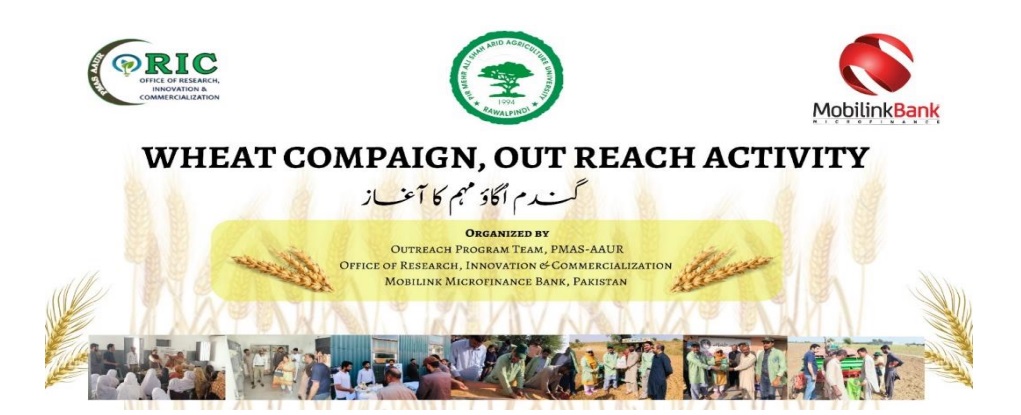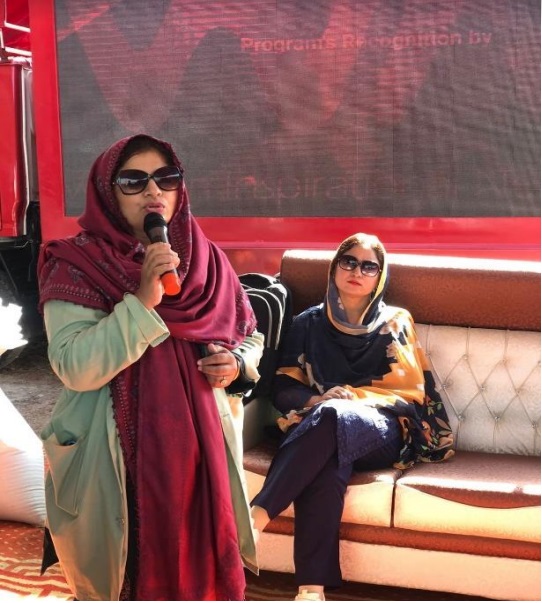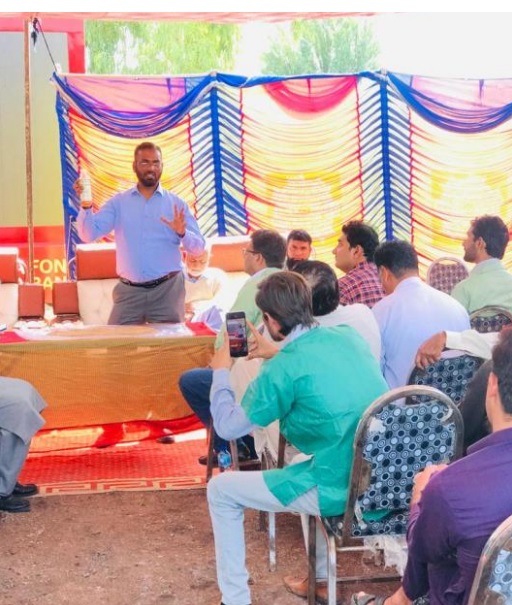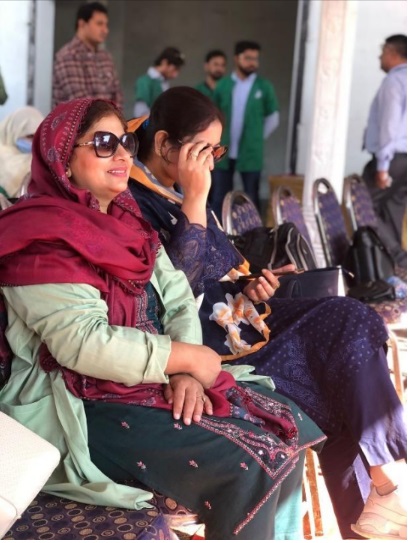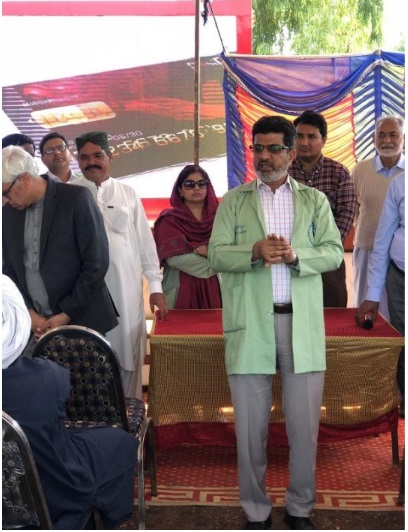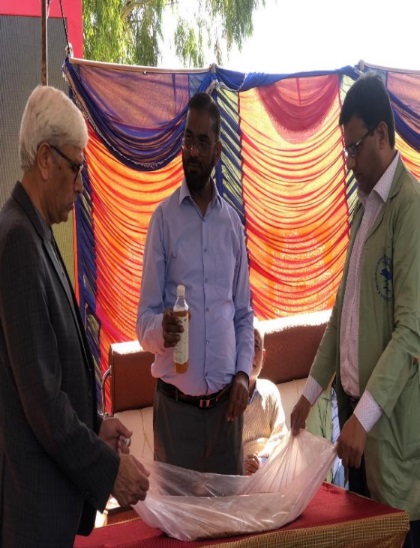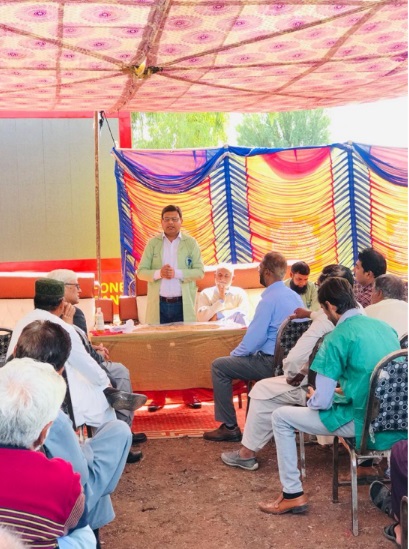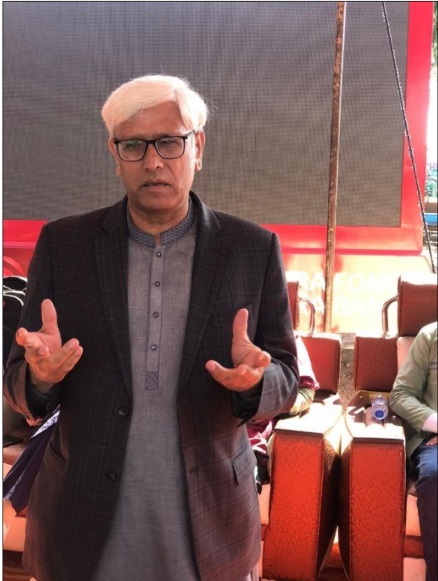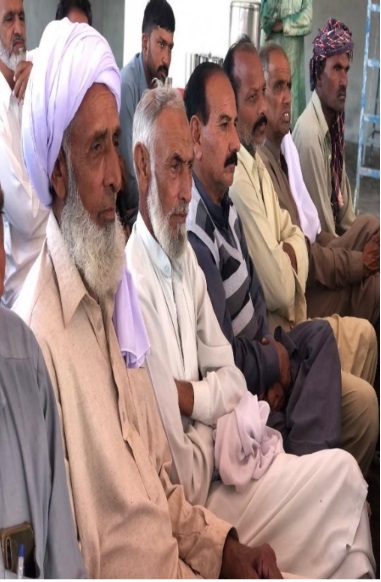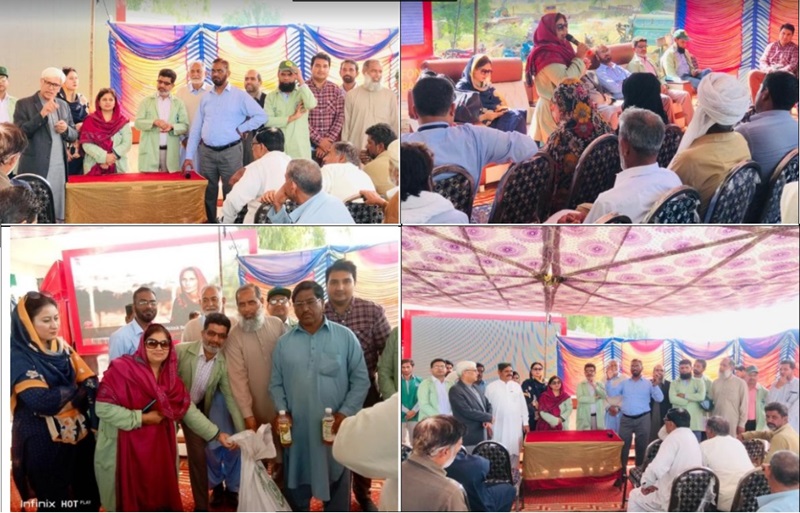Farmers Out Reach Program (Rawalpindi Group)
The wheat stripe rust disease severity report of different wheat varieties as affected by different planting dates at University Research Farm, Koont, Chakwal
Eleven wheat varieties viz; Wafaq-2023, Markaz-2019, PAK-2013, NARC Super, Barani-2017, Urooj-2022, Fakhar e Bhakkar, Dilkash-2021, Akbar-2019, MA-2021, and Nishani Bhakkar were sown at the University Research Farm Koont, Chakwal to find out the effects of different planting dates i.e., end of October and mid of November. Fertilizer was applied at the planting time @ 100- 80 Kg NP ha-1 in the form of Urea and DAP. All other agronomic, cultural, and plant protection measures were kept at par.
The disease severity symptoms data were recorded from five different places in the same field. The wheat stripe rust disease severity and field response were recorded using the modified Cobb’s scale described by Peterson et al. (1948).
Table 1. The wheat stripe rust disease severity according to the modified Cobb’s scale described by Peterson et al. (1948).
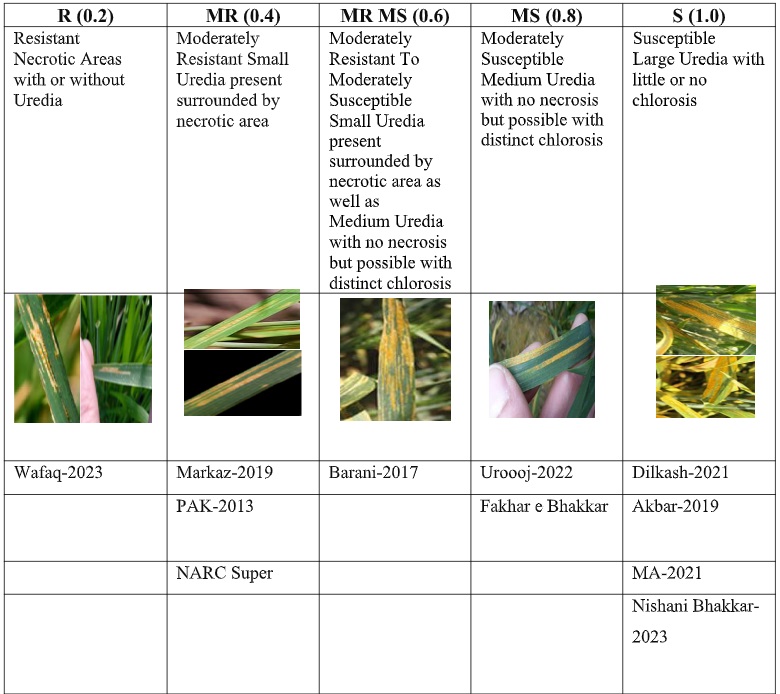
Immune = 0
Resistant (R) = 0.2
Moderately Resistant (MR) = 0.4
Moderately Resistant to Moderately Susceptible (MR/MS) = 0.6
Moderately Susceptible (MS) = 0.8
Susceptible (S) = 1.0
Results
The wheat stripe rust disease was observed in almost all of the wheat varieties grown on different
dates. However, there was a general observation that the early-sown wheat varieties were less
affected by the wheat stripe rust disease pathogen (Puccinia striiformis f. sp. tritici) than the late-
sown varieties. None of the wheat varieties were immune or entirely resistant to the wheat stripe
rust disease pathogen. However, Markaz-2019, PAK-2013, and NARC Super were found to be
moderately resistant, Barani-2017 was moderately resistant to moderately susceptible, Urooj-
2022 and Fakhar e Bhakkar were moderately susceptible, and the remaining four wheat varieties,
Dilkash-2021, Akbar-2019, MA-2021, and Nishani Bhakkar-2023 were observed as susceptible
to highly susceptible.
Recommendations
The wheat crop varieties were at the milking and maturity stages, so chemical sprays are not
recommended. The data shows that under rainfed conditions, wheat planting should be
completed early in November to avoid the attack of rust pathogens. As far as variety
performance is concerned, Markaz-2019, PAK-2013, and NARC Super performed better than the
other varieties.
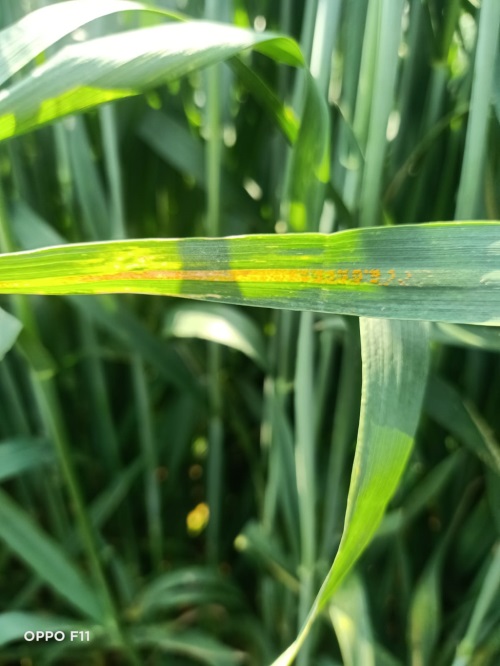
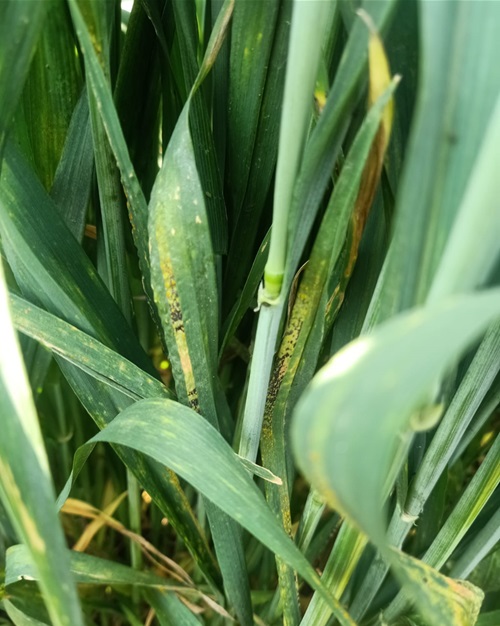
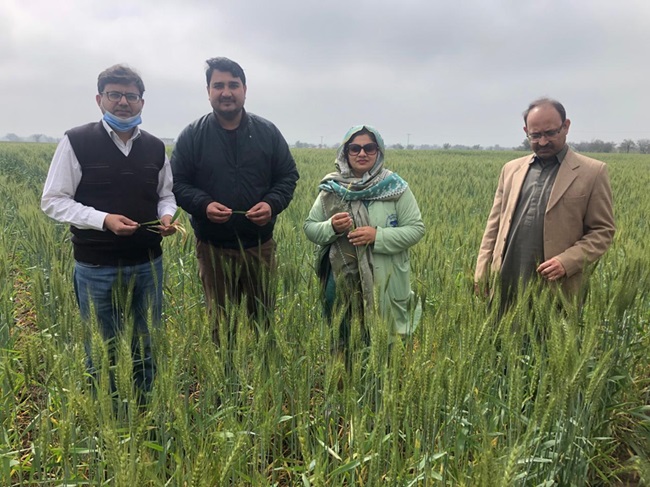
One day outreach activity to collect data of wheat diseases and plant parameters
Date: 15-Mar-2024
The primary objective of the one-day outreach activity, held on March 15, 2024, was to collect data on wheat yellow rust disease and various plant parameters to aid in understanding the prevalence of the disease and its impact on wheat crops in the target area. The outreach activity involved the participation of agricultural experts, researchers, farmers, and volunteers from the local community interested in contributing to agricultural research and disease management. The day began with an introduction to the purpose and importance of collecting data on wheat diseases and plant parameters. It was conducted to familiarize participants with the identification of yellow rust symptoms, proper data collection techniques, and the use of relevant tools such as magnifying lenses and measuring instruments.
Teams were formed, and designated areas were assigned for field surveys. Participants conducted thorough surveys of wheat fields, carefully observing and documenting the presence and severity of yellow rust symptoms on wheat plants. In some areas wheat smut disease was also observed. Data on plant parameters such as plant height, leaf area, number of tillers, and flowering stage were also recorded to assess the overall health and growth of the wheat crops. Detailed records of observed yellow rust symptoms, including the type of lesions, their distribution on leaves, and severity ratings, were documented. Plant parameters were measured using standardized protocols, ensuring consistency and accuracy in data collection.
After completing the field surveys, participants gathered for a discussion session to share their findings and observations. All experts/participants provided insights into the significance of the collected data and its implications for disease management and crop productivity. Based on the collected data and analysis, recommendations were made for implementing effective disease management strategies, including timely fungicide application, crop rotation, and selection of resistant wheat varieties. Further research initiatives and collaborative efforts were proposed to deepen understanding and develop sustainable solutions for mitigating the impact of wheat yellow rust disease.
The one-day outreach activity proved to be a valuable endeavor in gathering essential data on wheat diseases especially yellow rust disease and plant parameters. By engaging various stakeholders and leveraging community participation, significant strides were made towards enhancing the knowledge base and fostering collaboration for improving wheat crop resilience and productivity in the target area.
We extend our sincere gratitude to all participants, volunteers, and supporting staff for their contributions and commitment to advancing agricultural research and development efforts.
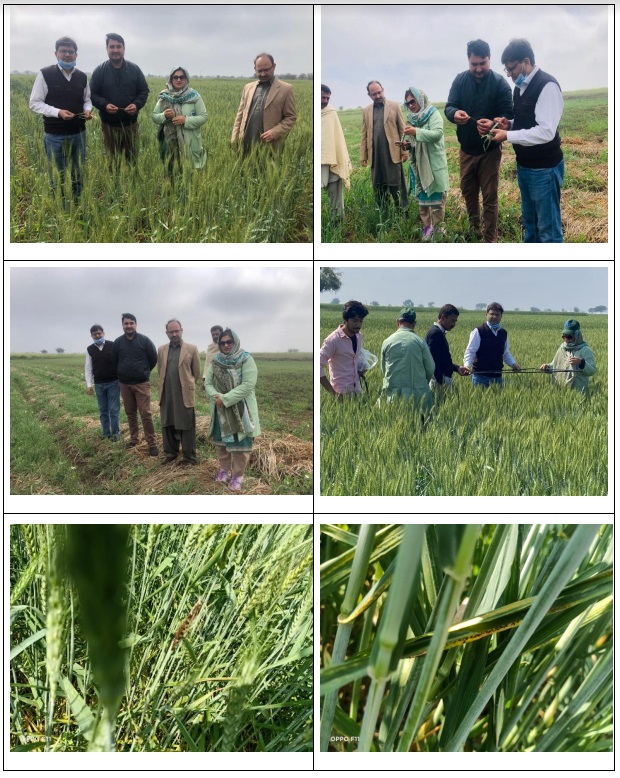
Program at Jatali, District Rawalpindi
Date: 24-Oct-2023
The event of the Farmers Out Reach Program (Rawalpindi Group) commenced with the recitation of the Holy Quran by Dr. Sajid Mehmood (Assistant Professor, Department of Plant Pathology) and the inauguration of the wheat sowing ceremony in the Demonstration Plot, aimed at providing farmers with valuable insights on adopting new production technology in the Potohar region. Dr. Gulshan Irshad (Associate Professor and Convener of the Rawalpindi Group for OutReach Program) led the orientation session, emphasizing the importance of wheat campaigns all over the Punjab province. She encouraged the farmers to grow high- yielding wheat varieties developed by the different research organizations in Pakistan. Dr. Saad Malik and Dr. Munir Ahmed told the farmers about selecting suitable wheat varieties for the Pothohar region to continue this vital discussion. The program also featured a demonstration conducted by Dr. Iftkhar Ahmed (Program Leader at NCCP, NARC, Islamabad) and Dr. Tariq Sultan (Director, Land Reforms, NARC, Islamabad) focusing on seed dressing with biofertilizers, highlighting its significance in enhancing crop yield and quality. Another critical aspect covered was the diagnosis and management of wheat diseases, which was elucidated by the expertise of Dr. Sajid Mehmood, providing farmers with essential measures to safeguard their crops from potential threats.
The event was enriched by the expertise of Dr. Muhammad Tariq (Associate Professor, Department of Entomology), who shared valuable insights on wheat insects and their management. Advanced agricultural practices, ensuring that the farmers were well-informed about the latest developments in the field was highlighted by Dr. Muhammad Akmal (Assistant Professor, Department of Soil Science), Dr. Shahbaz Ata Tung (Assistant Professor, Department of Agronomy), Dr. Naveed Ur Rehman (Assistant Professor, Department of Horticulture), and Dr. Mehwish Liaqat (Assistant Professor, Department of Horticulture). Additionally, Dr. Gulshan Irshad contributed to the event, likely providing further expertise in the domain enriching the overall knowledge shared during the program.
